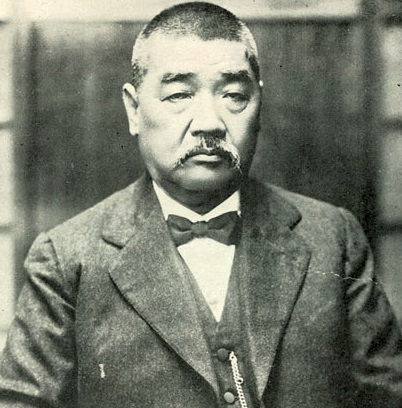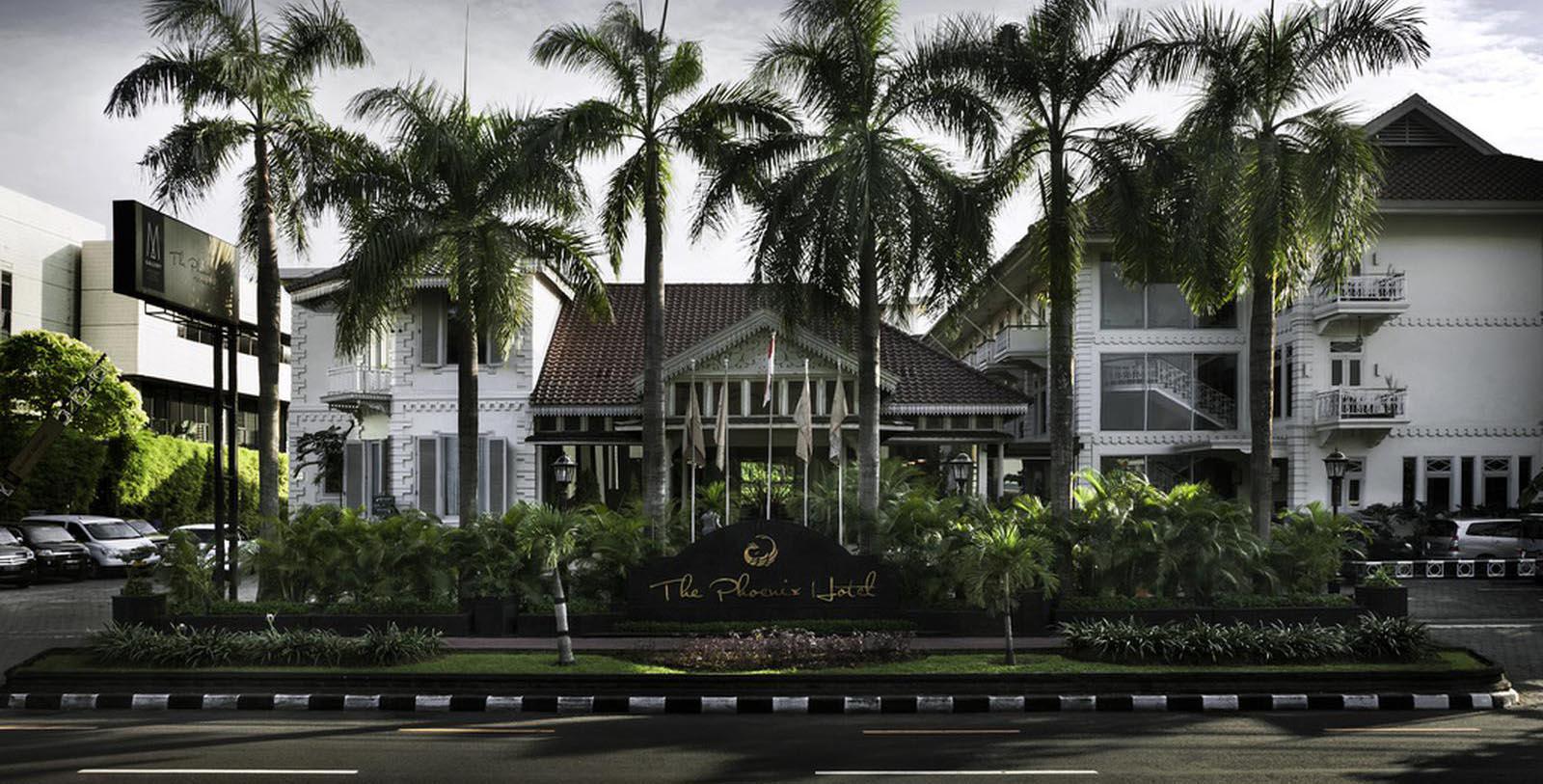Receive for Free - Discover & Explore eNewsletter monthly with advance notice of special offers, packages, and insider savings from 10% - 30% off Best Available Rates at selected hotels.
history
Discover The Phoenix Hotel Yogyakarta - Handwritten Collection, which was once a mansion for Chinese sugar trader Kwik Djoen Eng.
The Phoenix Hotel Yogyakarta - Handwritten Collection, a member of Historic Hotels Worldwide since 2018, dates back to 1928.
VIEW TIMELINEA member of Historic Hotels Worldwide since 2018, The Phoenix Hotel Yogyakarta - Handwritten Collection is one of the best holiday destinations in Indonesia. Not only has it built a fabulous reputation for its unrivaled service, but it is also celebrated as one of its most cherished cultural landmarks. But this fabulous historic building had not always been a prestigious boutique hotel. During the 1890s, a transplanted Chinese entrepreneur arrived in the Javanese city of Yogyakarta to establish himself within the region’s prosperous spice trade. His name was Kwik Djoen Eng, and he would rise in prominence as “The Java Sugar King.” Kwik Djoen Eng specifically started shipping sugar from Yogyakarta through a company he founded with his brother, called the “NV Kwik Hoo Tong Handel Maatschappij.” His business endeavor became so successful that Kwik Djoen Eng began opening additional brands throughout Java. In just a matter of decades, Kwik Djoen Eng had emerged as one of Southeast Asia’s most prominent businesspeople. Amid his ascent into the East Indies spice economy, Kwik Djoen Eng constructed numerous estates throughout the Dutch East Indies that reflected his grand prestige. Among the lavish residences that he developed was a beautiful manor that he placed right in the center of Yogyakarta. Kwik Djoen Eng designed his new home in the style of European Art Deco, blending it with a combination of Javanese architectural aesthetics. When Kwik Djoen Eng finally completed his estate in 1918, it stood as a wonderful example of Indonesian-Dutch architecture, known as “Indische.”
Kwik Djoen Eng did not live in his grand palace for long, however. The Great Depression greatly undermined his financial stability, as the global economic downturn bankrupted every single one of his businesses. As such, the local Javasche Bank foreclosed on most of his estates in Indonesia, which subsequently sold them off to private bidders. Another local businessman named Liem Djoen Hwat bought Kwik Djoen Eng’s Yogyakarta manor during the mid-1930s, eventually transforming it into an opulent hotel that he christened as the “Hotel Splendid.” The Hotel Splendid remained in operation up until the early 1940s, when the Japanese occupied Java during World War II. Renamed as the “Hotel Yamato,” the Japanese Imperial Army used the building as the site for their headquarters in Yogyakarta. But with Japan’s defeat at the hands of the Allies, Liem Djoen Hwat reacquired his beautiful building. He eventually reopened it as the “Hotel Merdeka” in 1951 to great acclaim. For the next 36 years, the Hotel Merdeka built a storied reputation for its amazing hospitality. The hotel soon became a desirable holiday destination for many traveling politicians and international celebrities. It even became the home for the illustrious President of Indonesia, Sukarno. Due to its great historical significance, the Indonesian Ministry of Education and Culture designated the hotel as a national historical landmark in 1996. AccorHotels now owns this fabulous gem, which it has operated as “The Phoenix Hotel Yogyakarta - Handwritten Collection” since 2009.
-
About the Location +
Centuries ago, the first permanent settlement to inhabit the region belonged to the mighty Medang Kingdom, which ruled over all of Java for more than 300 years. Originally founded by King Sanjaya in the 8th century, the kingdom was largely inhabited by the “Mataram.” Initially, the Mataram relied heavily upon rice farming and other forms of agriculture for sustenance. But as naval technology improved over time, the people of the Medang Kingdom were able to develop a rich maritime trade with the other surrounding islands of the archipelago. Archeological evidence has since suggested the kingdom’s balance of agriculture and commerce created an incredibly prosperous. In fact, the new wealth enabled a series of building projects to proliferate throughout the region, specifically the construction of many new Buddhist and Hindu temple complexes. Among the most notable to appear in the period included the great Borobudur and Prambanan facilities, both of which are currently protected as UNESCO World Heritage Sites. At its peak, the Medang Kingdom had grown into one of the most powerful states in southeast Asia, even seizing territory in neighboring Sumatra. Soon enough, the Medang’s power rivaled that of the famous kingdoms that resided in Indochina and the Philippines.
The golden age of the Medang Kingdom steadily declined at the end of the 10th century, though, especially after its ruling dynasty split into two hostile factions based in Java and Sumatra. After years of quarrelling, the group of Sumatrans—known as the Srivijayas —evenutally deposed the Matarams upon inciting a rebellion within one of its client states, Wurawari. The Srivijayas filled the subsequent power vacuum, establishing themselves as the dominate socioeconomic power in Indonesia. The former realms of the Medang Kingdom persisted nonetheless, gradually morphing into a new empire known to history as the “Majapahit.” A seaborne society ruled by Hindu nobles, the Majapahit existed in Java from the 13th to the 16th centuries. The area around present-day Yogyakarta became included into an official royal province called “Mataram,” whose leader—the Bhre Matara—governed on behalf of the Majapahit monarchs. Much like the Medang Kingdom before it, the Majapahit empire soon expanded its borders to cover a territorial domain that stretched across the whole Java Sea. Based primarily out of central Java, the civilization retained countless outposts in such places like Sumatra, Sulawesi, Borneo, and even Malaysia. But the rise of Islam across Indonesia spelt doom for the Majapahit, as the empire became embroiled in a prolonged war with several client states that had embraced the religion. The greatest threat came from the Sultanate of Demak on Java’s north coast, which managed to depose the Majapahits by the early 1500s.
Scholars today mostly agree that rise of the Sultanate of Demak successfully introduced Islam permanently throughout Java. Numerous new Islamic kingdoms appeared across the island, spurred on by trade with Muslim merchants from mainland Asia and the Middle East. The greatest to emerge, though, was the Mataram Sultanate in the early 16th century, which influenced Javanese society for the better part of the next 200 years. Among the significant changes that the new polity implemented was the elevation of Kotagede—now one of Yogyakarta’s current neighborhoods—as the capital for the sultanate. But in the mid-1700s, civil strife rocked the court of the Mataram Sultanate, resulting in a civil war that saw the creation of a new Islamic state on Java—the Sultanate of Yogyakarta. Prince Mangkubumi of the Mataram Sultanate had rebelled against his brother, Pakubuwono II, after the latter had agreed to work alongside European merchants. With the subsequent signing of the Treaty of Giyanti in 1755, the Sultanate of Yogyakarta officially became a separate political entity, with Prince Mangkubumi ruling at the head of the new royal House of Hamengkubuwono (still the ruling house of Yogyakarta today). Mangkubumi also oversaw the creation of the city of Yogyakarta, too, uniting all of the disparate communities in the area to form a single capital for the sultanate.
As the discontent among Javanese rulers gradually defined regional politics, The Netherlands (through the Dutch East India Company) began extending its influence across the island in the 17th century. At first, the Dutch merely sought to foster trade monopolies over local cash crops, such as nutmeg, cinnamon, and sugar. But over time, the Dutch established themselves as the colonial overlords of both Java and the rest of the Indonesian archipelago. Only the Yogyakarta and neighboring Batram sultanates were left to resist the Dutch, which were ultimately subdued during the early 19th cenutry. The defeats seriously undermined the authority of the Yogyakarta Sultanate, although it continued to exist somewhat autonomously under Dutch colonial rule for some time. Yogyakarta and the greater sultanate remained a part of the Dutch East Indies for years, until the early stages of the Second World War. In February of 1942, Japan instigated a massive invasion of Java as part of a grander strategy to capture the resource rich island chain. In just a span of a few weeks, the Imperial Japanese Army conquered all of Java (as well as the rest of Indonesia) and included it within its “Greater East Asia Co-Prosperity Sphere.” Yogyakarta itself was occupied for months by soldiers belonging to Japan’s 16th Army.
Following Japan’s defeat in 1945, Java reverted back to Dutch control. Still, the inability of the Dutch to blunt Japan’s assault ignited a revolution throughout the Dutch East Indies that sought to liberate the archipelago. Yogyakarta was subsequently selected as the capital for the newly created nation of Indonesia by Sukarno, its first president. The city remained the capital for the next two years amid the Indonesian National Revolution, even though the sultanate maintained its independent status. Nevertheless, the reigning Sultan of Yogyakarta at the time, Hamengkubuwono IX, affirmed his support for the national independence movement, foreshadowing its future integration into the new nation-state. In fact, the Yogyakarta Sultanate later joined Indonesia in 1950, once the Dutch had finally surrendered. As tribute to the Yogyakarta Sultanate’s long history of self-rule, the Indonesian government subsequently granted both the city and the surrounding territory the title of a “Special Region.” Its status granted it privileges on par with that of an official province—a standing that was reinforced years later in 2012 when the Indonesian Government formally recognized the sultan as the hereditary Governor of Special Region of Yogyakarta. Today, much of downtown Yogyakarta is preserved as a prestigious UNESCO World Heritage Site that is replete with all kinds of fantastic cultural destinations, including the Taman Sari, the Jalan Malioboro, and the Kraton Ngayogyakarta Hadiningrat. Come experience the cultural heritage vacation of a lifetime inside the city of Yogyakarta.
-
About the Architecture +
Kwik Djoen Eng designed his new home in the style of European Art Deco, blending it with a combination of Javanese architectural aesthetics. When he finally completed his estate in 1918, it stood as a wonderful example of an Indonesian-Dutch architectural form known as “Nieuwe Indische Bouwstijl,” or “New Indies Style.” The New Indies Style was a series of modern design aesthetics that proliferated throughout the entire Dutch East Indies from the late 19th century until the outbreak of World War II. While architects in Indonesia had long practiced the infusion of indigenous architectural motifs with Dutch design aesthetics, the advent of the New Indies Style sought to introduce aspects of Western Modernism, as well. Much of the new construction was spurred by the Departement voor Burgerlijke Openbare Werken (Public Works Department), which implemented a new series of building codes to help construct “contemporary” municipal structures across the archipelago. At first, the New Indies Style focused on developing novel methods toward incorporating more traditional architectural approaches with newer technologies. Greatly influenced by the work of European-based Dutch architect Hendrik Petrus Berlage, those initially involved with the New Indies Style specifically used elements of Romanesque design aesthetics to synthesize a new blend of European Classist and native Indonesian architecture.
But as the century wore on, the architects began to rely upon more contemporary European architectural approaches, such as the nascent Art Deco movement. Like with other Art Deco-inspired structures, buildings of the New Indies Style embraced rich color, bold geometric shapes, and fantastic ornamentation. The New Indies Style blend of Art Deco also incorporated the latter’s sleek, linear symmetry that gave life to the idea of the 20th century’s perceived technological prowess. Characteristics of southeast Asian architectural, nonetheless, appeared within the buildings, too, adopting aspects of Indonesia’s famed Rumah Adat houses. Still, the use of Art Deco architecture in Indonesia matured into the “Nieuwe Bouwen,” which drew its inspiration from the German Bauhaus. The Nieuwe Bouwen placed a greater emphasis on the use of curving horizontal lines in a manner similary to the “Streamline Modern” style of North America and Europe. Evenutally, the Art Deco-themed architecture of East Indies gradually gave way to even newer designs, particularly the Neo Vernacular and International styles that appeared in the wake of Indonesia’s independence in 1945. Art Deco architecture and the greater New Indies Style nonetheless left a significant impact on Indonesia culture, with some of the surviving structures protected today as national historical landmarks by the Indonesian Ministry of Education and Culture.
-
Famous Historic Guests +
Sukarno, First President of Indonesia (1945 - 1967)




























